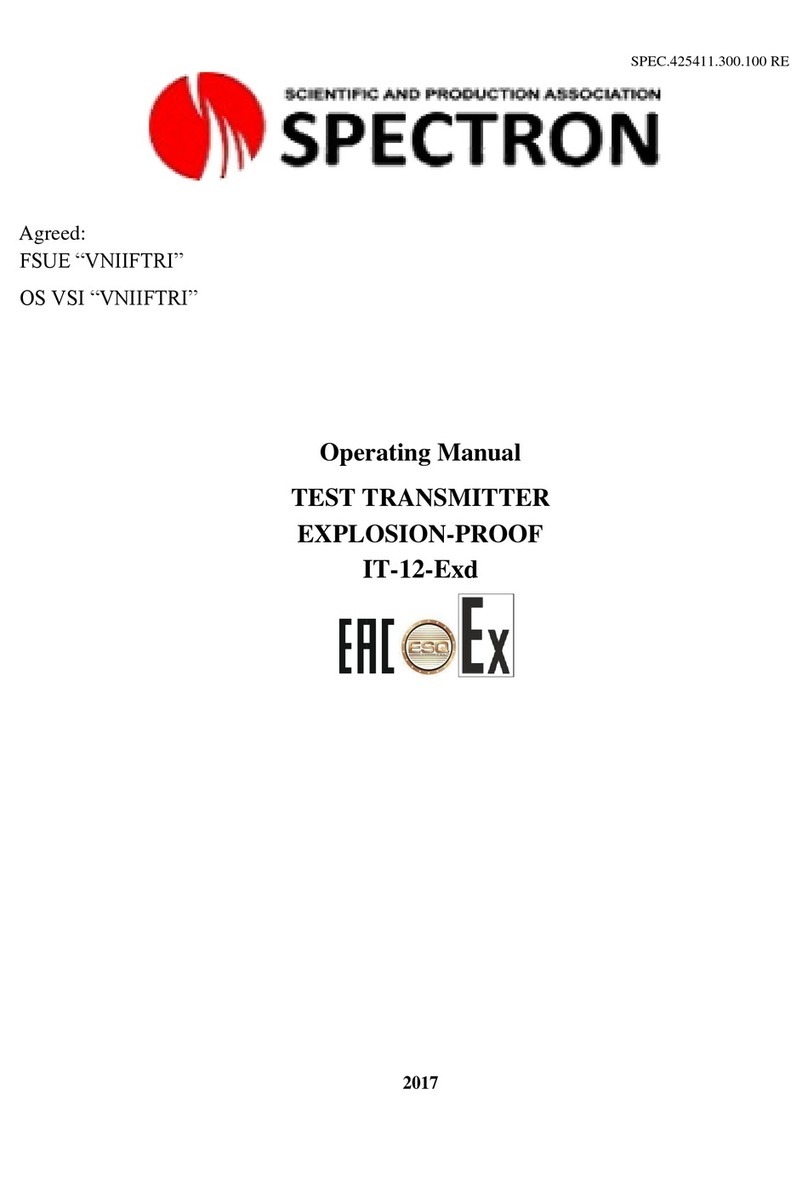6
Observance of safety rules is a necessary requirement for safe operation and
functioning of the transmitter.
Operation of the transmitter should be performed by authorized personnel that
received training, an assessment by a certification committee and got acquainted with
the Operating Manual and instructed on safe service and maintenance.
Any work associated with removing the battery compartment cover must be
performed only outside of explosion-hazard areas.
Maintenance personnel shall be responsible for occupational safety.
Explosion safety of the transmitter is provided by:
•type “d” ex-proof shell;
•in compliance with GOST 30852.1 conducting parts and sparking parts are
installed inside an ex-proof body that is resistant to explosion pressure and,
along with protection means, prevents explosion transfer to the explosion-
hazard environment; the battery compartment cover is threaded to the body.
•in normal operating mode, the heating temperature of the outer surface does not
exceed temperatures recommended for electrical equipment of the
corresponding temperature class, in compliance with GOST 30852.0;
•the shell corresponds to the high degree of mechanic stress in compliance with
GOST 30852.0.
4. TROUBLESHOOTING
ATTENTION!
The transmitter is not designed to have its components repaired by the user.
If the transmitter is on but its light-emitting diodes are not luminescent you should
charge the batteries according to section 3.3 - Battery Charging.
If light-emitting diodes did not resume luminescence after the batteries have been
charged please contact NPO Spectron Service Desk.
5. REPAIR AND RETURN OF THE DEVICE
The transmitter is not intended to be repaired by the user on site. If any problem
occurs, please follow section 4 - Troubleshooting. If the user identifies any defects or
failures they unilaterally create a failure certificate with defect description. The
transmitter along with the product passport and certificate shall be returned to the
manufacturer.
Transmitter’s transportation packaging is described in section 7 - Transportation
and storage. If the transmitter is returned to the manufacturer, it should be sent to: 2D,
Lenin St., Beryozovsky, Sverdlovsk Oblast, 623700, Russia, tel.: (343)379-07-95.


























